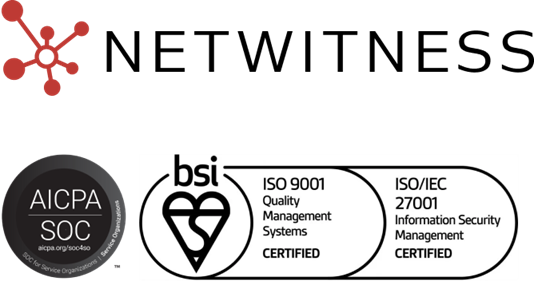What is Cybersecurity Mesh Architecture (CSMA)?
Cybersecurity Mesh Architecture (CSMA) is a composable and scalable approach to designing distributed security systems that provide flexible, interoperable protection across hybrid multi-cloud environments, remote workforces, and complex digital infrastructures. Understanding CSMA cybersecurity mesh architecture and implementing this cybersecurity strategy enables organizations to adapt their cybersecurity posture to modern digital transformation challenges while maintaining comprehensive visibility and coordinated threat response.
Cybersecurity mesh architecture involves creating a flexible, identity-centric security framework that extends protection across widely distributed assets regardless of their location in cloud environments, on-premises infrastructure, or edge computing devices. Instead of attempting to secure all resources through a single perimeter, cybersecurity mesh distributes enforcement points throughout the infrastructure while maintaining centralized policy management and security analytics.
Modern CSMA implementations align closely with Zero Trust principles by treating identity as the primary security perimeter rather than network location. This cybersecurity technology approach enables organizations to enforce consistent security operations across diverse environments while supporting the agility required for digital transformation initiatives and evolving business needs.
Synonyms
- Cybersecurity Mesh (CSM)
- Cybersecurity Mesh Model
- Zero Trust Architecture (ZTA)
- Secure Access Service Edge (SASE)
Why Cybersecurity Mesh Architecture Matters
Failing to adapt cybersecurity infrastructure to distributed computing models can result in security gaps, inconsistent policy enforcement, and inability to detect threats across fragmented environments. Key reasons cyber security mesh architecture is essential include:
- Distributed Asset Protection: Securing resources that exist outside traditional network perimeters including cloud services, remote endpoints, and IoT devices.
- Operational Agility: Supporting rapid digital transformation and business expansion without compromising cybersecurity management effectiveness or creating security bottlenecks.
- Improved Threat Response: Enabling faster detection and coordinated response through centralized analytics combined with distributed enforcement capabilities.
- Cost Efficiency: Maximizing return on existing security investments by improving interoperability between tools rather than requiring complete infrastructure replacement.
Effectively implementing cybersecurity mesh enables organizations to maintain strong cybersecurity posture while supporting modern hybrid work environments and multi-cloud architectures.
How Cybersecurity Mesh Architecture Works
CSMA implementations typically employ four foundational layers:
- Security Analytics and Intelligence: Centralized collection, correlation, and analysis of threat data from distributed security tools providing real-time risk assessment and coordinated response capabilities.
- Distributed Identity Fabric: Identity-centric access controls including directory services, adaptive authentication, and entitlement management that follow users and devices regardless of location.
- Consolidated Policy Management: Centralized policy definition that translates into native configurations for individual security tools or provides dynamic runtime authorization services.
- Integrated Dashboards: Unified visibility into the entire security ecosystem enabling security operations teams to monitor events and coordinate responses across distributed environments.
- Federated Enforcement: Local policy enforcement at distributed nodes while maintaining synchronization with central governance and shared threat intelligence.
Types of Cybersecurity Mesh Applications
- Hybrid Workforce Security: Enforcing consistent security policies for remote employees, satellite offices, and on-premises users based on identity and device posture.
- Multi-Cloud Protection: Providing uniform policy enforcement across multiple cloud providers while correlating threat data from diverse platforms.
- Zero Trust Enablement: Supporting identity-first security with context-aware enforcement, continuous verification, and micro-segmentation capabilities.
- IoT and Edge Security: Extending security policies to operational technology devices and edge computing environments outside traditional networks.
Best Practices for Cybersecurity Mesh Architecture
- Start with Identity Foundation: Implement robust identity access management and authentication systems as the core control point for mesh architecture.
- Enable Tool Interoperability: Select cybersecurity technology that supports open APIs and integration standards to facilitate communication between security products.
- Centralize Analytics: Consolidate telemetry from distributed enforcement points into unified security information and event management platforms for comprehensive visibility.
- Adopt Gradual Migration: Evolve existing cybersecurity infrastructure incrementally rather than attempting complete replacement to minimize disruption and risk.
- Maintain Consistent Governance: Establish centralized policy management while distributing enforcement to ensure consistent cybersecurity posture across all environments.
Related Terms & Synonyms
- Cybersecurity Mesh (CSM): Alternative abbreviation emphasizing the interconnected security fabric concept.
- Cybersecurity Mesh Model: Framework describing how distributed security tools coordinate while maintaining independent enforcement.
- Zero Trust Architecture (ZTA): Security model assuming no implicit trust and requiring continuous verification of all access requests.
- Secure Access Service Edge (SASE): Cloud-delivered architecture combining network security functions with wide area networking capabilities.
People Also Ask
1. What is cybersecurity?
Cybersecurity is the practice of protecting computer systems, networks, programs, and data from digital attacks, unauthorized access, damage, or theft through implementation of technologies, processes, and controls designed to safeguard information assets.
2. What is Cybersecurity Mesh?
Cybersecurity Mesh is a flexible, composable security architecture that distributes enforcement points across infrastructure while maintaining centralized policy management, enabling consistent protection for widely distributed assets in hybrid multi-cloud environments.
3. What is cybersecurity risk?
Cybersecurity risk is the potential for loss, damage, or disruption resulting from threats that exploit vulnerabilities in information systems, networks, or data, measured by likelihood of occurrence and potential business impact.
4. Is cybersecurity oversaturated?
While the cybersecurity vendor market is crowded with numerous solutions, demand for skilled professionals continues to exceed supply, and organizations still face significant challenges in implementing effective comprehensive security programs.
5. How to improve cyber security awareness?
Improve cybersecurity awareness through regular training programs, simulated phishing exercises, clear security policies, ongoing communications about emerging threats, and creating a security-conscious culture where reporting suspicious activities is encouraged and rewarded.




